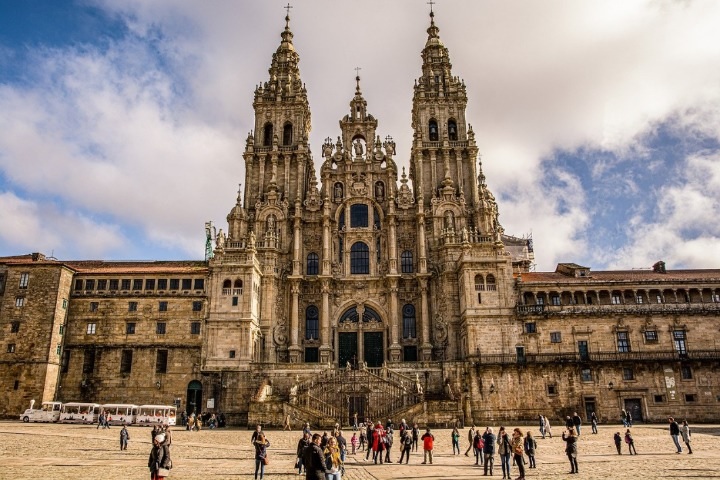
The Camino de Santiago offers us some of the most beautiful corners and landscapes in all of Spain. It is not surprising, since since the origin of the pilgrimages to Santiago de Compostela, different routes were configured that depart from different parts of the Peninsula. The antiquity and the number of routes, make the Jacobean routes into places loaded with endless heritage.
Today, it is possible to select a route based on personal interests and tastes. For example: lovers of art and history tend to opt for the French way, while lovers of the coast usually take the North way .
Each of the roads that lead to Santiago is unique and offers a large number of beautiful landscapes. Here is a selection of some of the most beautiful landscapes that you will find on the Jacobean routes .
Roncesvalles – Navarrese Pyrenees
If you do the French way , this will be your first stop in Spanish lands. Roncesvalles is due to its location a historical enclave of Navarre territory. The town is very small but in it you will be able to appreciate heritage constructions associated with the Camino de Santiago. In addition, it offers in its surroundings a natural landscape of incalculable value, with paths loaded with Atlantic vegetation, very beautiful especially in the autumn season.
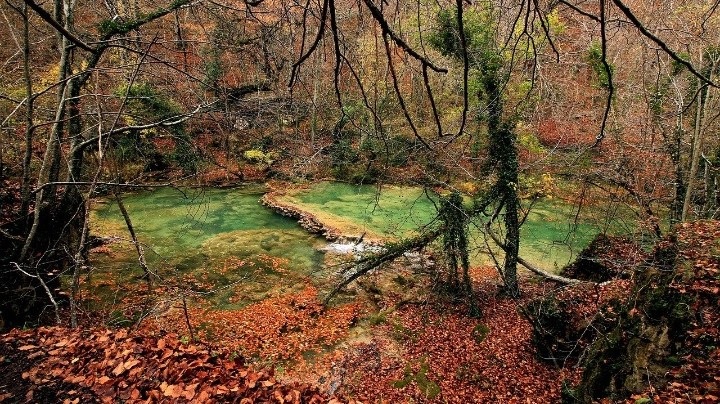
Pamplona
The city of Pamplona is undoubtedly one of the favorite spots for pilgrims on the French Way . It stands out for its lively atmosphere and the amount of cultural heritage it has. The views of the city, surrounded by nature and greenery, are spectacular. Urbanistically, it is a city that perfectly integrates the conservation of its cultural heritage with daily use. You will fall in love.
O Cebreiro – Lugo Mountains
Located in the province of Lugo, it is undoubtedly one of the greatest attractions of the French Way. Its main attractions are: the preservation of the characteristic architecture of pallozas and the Church of Santa María from the 9th century, which houses a Romanesque chalice from the 12th century. On the other hand, it is the entry point to Galicia for pilgrims who are traveling the French Way, and it is located in the middle of the Ancares National Reserve and the Sierra de Caurel. The panoramas of the natural environment are impressive.
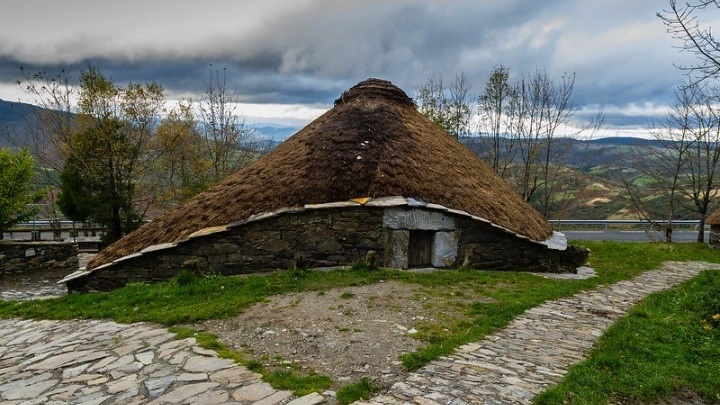
Fisterra
Finisterre or in Galician Fisterra. This name derived from the Latin Finis Terrae, means "the end of the world." Fisterra is a small town with seafaring traditions. There is a road to Fisterra from Santiago de Compostela, which is considered the epilogue of all roads.
Without a doubt, its main attraction is its spectacular and wild coastline (it is located on the Costa da Morte). Its main landmark is its lighthouse , which is part of the lighthouse trail on the Galician coast of Death. A true delight for lovers of the sea and photos.
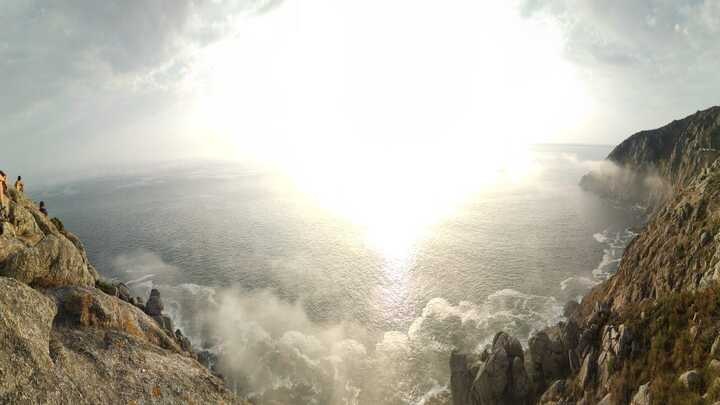
As Catedrais Beach
In general, the entire Cantabrian coast that runs along the Camino del Norte, from Irún to Ribadeo, is simply spectacular. However, today we are left with As Catedrais beach, located in the Lugo council of Ribadeo. This beach, located at the foot of the Cantabrian cliff, is a true work of art of nature . In fact, it was declared a Natural Monument by the Galician Ministry of the Environment, due to the unique shapes of its cliff, like arches and towers, the result of the erosion of the rock by the sea. It is one of the most photographed places in Galicia and each photograph is unique.
Estuary of the river Miño
This time, this landscape is offered to us by the old route of the Portuguese way. As we pass through its coastal section, when we cross from Portugal to Galicia, from Caminha to A Guarda, we come across the mouth and the majestic estuary of the river Miño. The views are spectacular from the mount of Santa Tegra, where you can also get to know one of the best-preserved forts in Galicia.
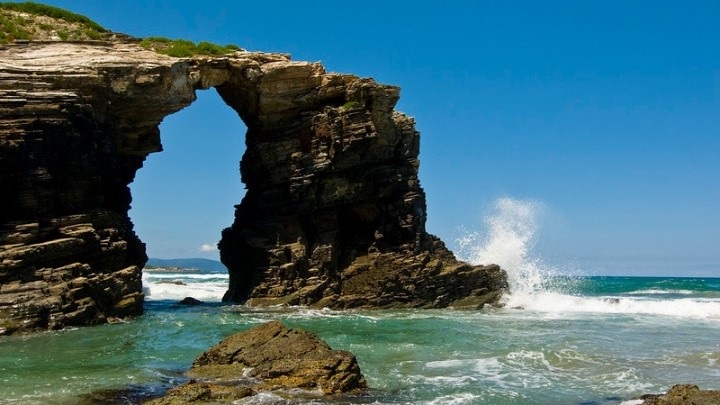
Poppy fields on the French way
The French way, as it passes through Castilla y León, runs through some areas of truly precious poppy fields . The whole forms a peaceful and idyllic landscape perfect for photographing.
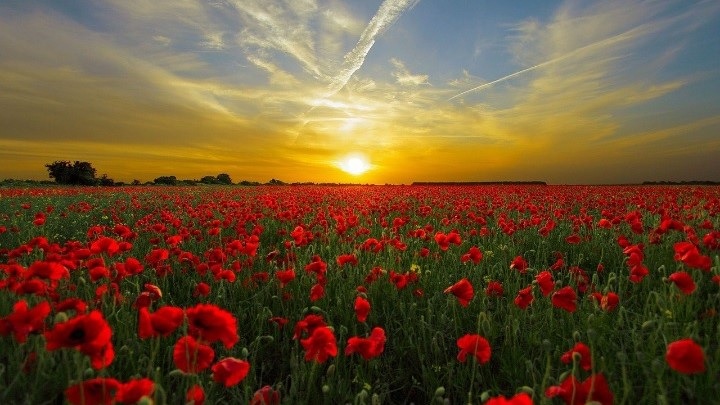
Roman wall of Lugo
Lugo is a historical enclave of the Primitive Way, the first of all the pilgrimage routes inaugurated by King Alfonso II the Chaste himself. Lugo preserves a large number of heritage elements of great value, but without a doubt, the star of the city is the Roman wall. This Roman wall is one of the best preserved in existence and was declared a World Heritage Site by UNESCO. It borders the historic center of the city with a length of more than 2 kilometers.
Pontedeume – Fragas do Eume
The first stage of the English way, runs from Ferrol to the town of Pontedeume. Pontedeume is a beautiful fishing village that in itself will make you fall in love. In addition, it is home to the Fragas do Eume Natural Park. This park is one of the best examples of the Atlantic forest on the Peninsula. The intensity of its greens will undoubtedly surprise you.
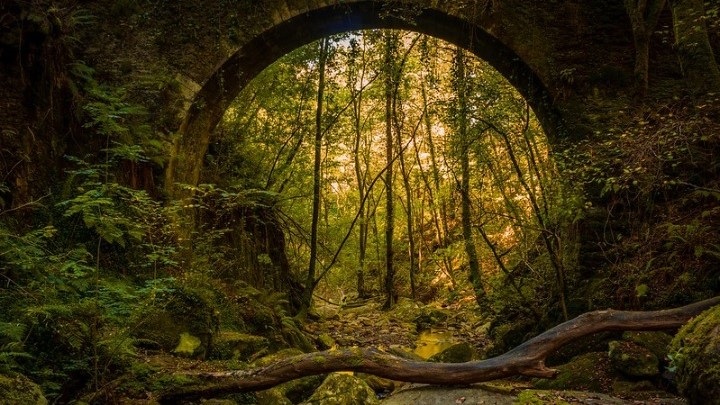
Santiago de Compostela
How could it be otherwise, we finished this review with the city of Santiago de Compostela. The historic center of Compostela houses the most representative cathedral of the Romanesque style in our country. It truly is a construction that will take your breath away. In addition, walking through the monumental complex of Santiago de Compostela is like walking through a story, you will adore every corner. It was declared a World Heritage Site in 1985.
As you have seen, the different Caminos de Santiago are loaded with endless natural and cultural landscapes of exceptional beauty and value . After this brief review, which path would you say is yours?
